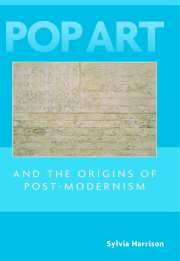7 - Susan Sontag: Pop, the Aesthetics of Silence, and the New Sensibility
from PART FOUR - “CULTURAL” CRITICS
Published online by Cambridge University Press: 23 July 2009
Summary
Susan Sontag's both public and highly successful career has encompassed the roles of cultural essayist, writer of fiction and, since 1969, filmmaker. It began in earnest in 1959 after her arrival in New York, the city of her birth, at the age of twenty-six. Armed with a B.A. from the University of Chicago (1952) and M.A.s in both English (1954) and Philosophy (1955) from Harvard, Sontag was fresh from further study in England (St. Anne's College, Oxford) and France (University of Paris) and, shortly thereafter, the dissolution of her youthful marriage to the eminent sociologist Philip Rieff. After an initial one-year stint as contributing editor of Commentary, Sontag supported herself by the combined proceeds of her writing, teaching posts, and grants, including those awarded by the Rockefeller Foundation in 1965 and the Guggenheim in the following year. The sixties, the inaugural phase of her writing career, proved to be highly productive; between 1962 and 1965, alone, Sontag produced some twenty-six essays and her first work of fiction, The Benefactor, while for the greater part of this period holding down a teaching position in the department of religion, Columbia University.
In her capacity as a cultural essayist, Sontag wrote a number of articles on contemporary art during the sixties. Contemporary art was discussed in these in a both far-reaching and inter-disciplinary manner, one that was consistent with her friendship, contracted shortly after her arrival in New York, with Marcel Duchamp, John Cage, Merce Cunningham, and Jasper Johns.
- Type
- Chapter
- Information
- Pop Art and the Origins of Post-Modernism , pp. 171 - 207Publisher: Cambridge University PressPrint publication year: 2001



